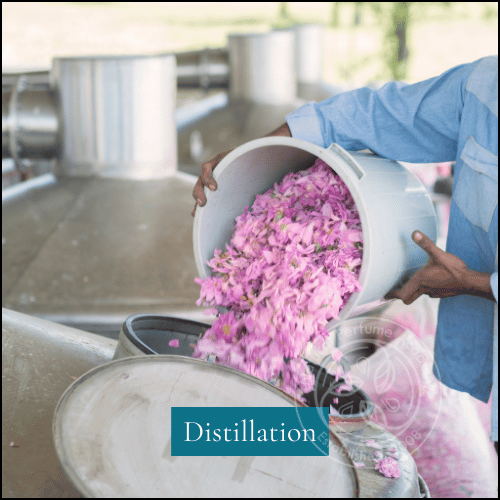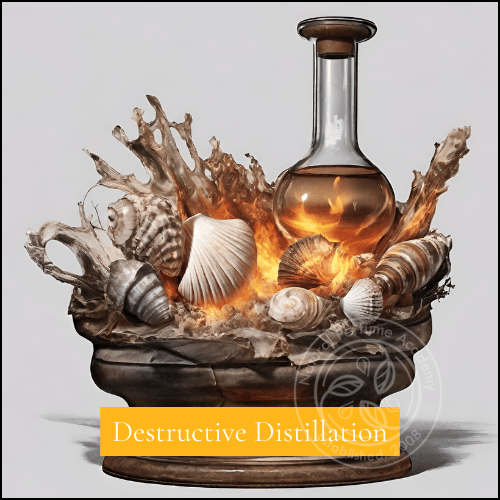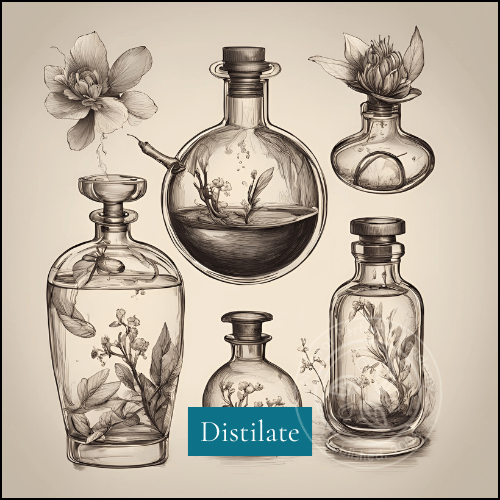Distillation 
Title: DistillationDistillation is a crucial process in natural perfumery, involving the separation and extraction of aromatic compounds from botanical materials through the use of heated water. This method has been used since ancient times to create essential oils and hydrosols (floral waters) from a variety of plant materials, including flowers, leaves, wood, and resins. The distillation process involves heating water to produce steam, which passes through the botanical material. The heat and steam cause the volatile aromatic compounds to evaporate and then condense into liquid form as they cool. The resulting liquid, known as the distillate, contains the concentrated essence of the plant. There are several types of distillation used in perfumery: Steam Distillation: The most common method, where steam is passed through the plant material, carrying the volatile compounds into a cooling chamber where they condense into a mixture of essential oil and water. The essential oil is then separated from the water. Hydro Distillation: This method involves submerging the plant material directly in water, which is then heated to produce steam. The steam rises, carrying the aromatic compounds with it, which are then condensed and collected. Destructive Distillation: A less common method that involves heating materials such as seashells, woods, or resins to the point of burning, resulting in a material with a smoky, leathery bouquet. This technique intentionally alters the chemical composition of the original material to produce unique aromatic compounds.
Historically, distillation has been practiced for thousands of years, with evidence of its use in ancient Egypt, Mesopotamia, and Persia. One of the earliest recorded distillers was Tapputi-Belatekallim, a Mesopotamian perfumer and chemist who lived around 1200 BCE. Her techniques laid the foundation for modern distillation practices. Distillation remains a fundamental technique in the creation of natural perfumes, valued for its ability to produce pure, high-quality essential oils that capture the true essence of the original botanical material. | 

